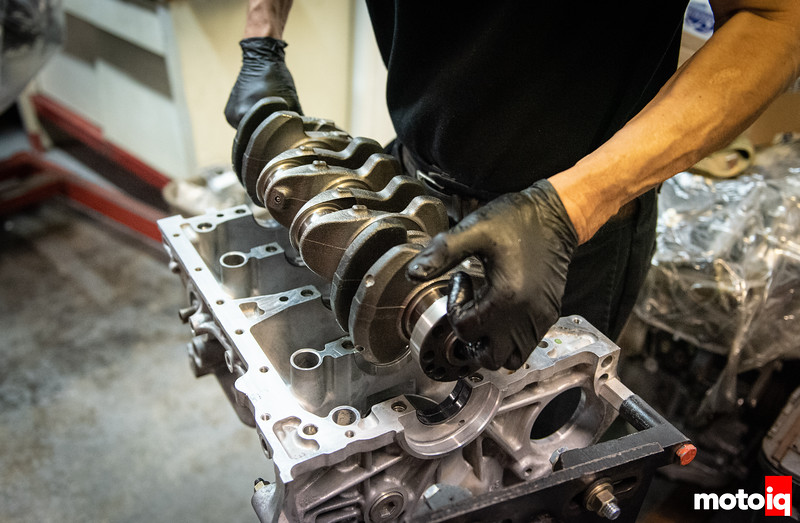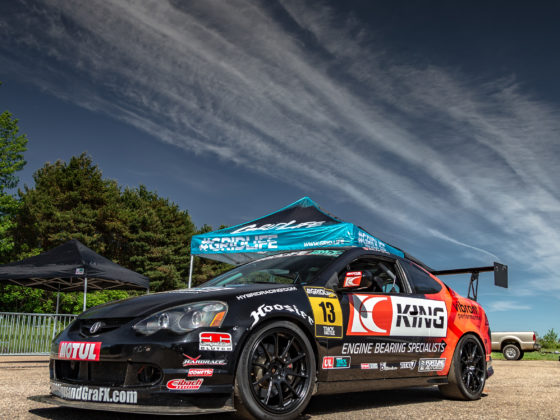
Next, the compression rings and oil rings are spiraled into place.

A piston ring compressor is used to compress the rings and the whole assembly is tapped into place using a mallet handle. Care is taken not to catch and break the rings at this point.

The rod and piston are in place.

Now the rod cap and bearing are installed.

The rod bolts are snugged up.

Now the rod bolts are torqued down in three steps and the rod bolt stretch is conformed with a micrometer.




3 comments
I am relieved You didn’t use the ARP main studs mentioned in Part One of this build.
That would’ve been total overkill on that power level.
In my previous life, I used to work for a motorsport shop that built rally, rallycross and circuit racing K-series engines among other things.
On NA builds with limited budget (which most of them were), we reused OEM Honda main studs up to 4 times, even head studs were reused up to 3 times.
Only difference was, they were always torqued to a specific value with a certain type of lubricant.
And not one time did we have a problem with bolts backing out or losing tension. If a headgasket did blow, it was always due to severe knock or overheating.
This looks like it’s going to be a fun package! What kind of power and torque is expected? Will engine speeds remain about stock?
Using WPC on the camshaft is beneficial on a Honda’s B series as well since these engines don’t have a bearing on the followers like the K series.
Looking forward to seeing what Motoiq does with the transmission of the RSX!